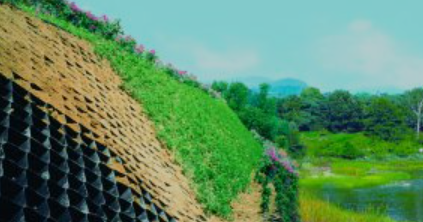- Understanding the Role of Geomembrane Liners in Waste Management
- Innovations in Geomembrane Liners for Water Management
- Geomembrane Liners: A Comprehensive Guide
- The Future of Geomembrane Liners in Civil Engineering
- Geomembrane Liners: Enhancing Landfill Stability
Manager:
WhatsApp:+86 177 0135 2670
Tel:+86 177 0135 2670
Email:marketing@okorder.com
Address:3rd Floor, No.2 Building, No.1 Sanlihe Road
How to use geocells?
Geocell slope protection has emerged as a reliable and cost-effective solution for stabilizing slopes in various terrain conditions. These innovative geosynthetic materials offer unparalleled reinforcement, erosion control, and slope stability, making them indispensable in civil engineering projects worldwide. In this guide, we delve into the practical applications and benefits of geocell slope protection, exploring the proper techniques for utilizing slope protection geocells effectively.

Understanding Geocells: The Basics
Geocells, also known as cellular confinement systems, consist of interconnected cells formed by high-density polyethylene (HDPE) or polypropylene (PP) panels. These panels are welded or extruded to create a robust honeycomb structure. When filled with soil, aggregate, or concrete, geocells form a stable foundation that distributes loads evenly and prevents soil erosion.
The Versatility of Geocell Slope Protection
Geocell slope protection offers versatile solutions for a wide range of slope stabilization challenges. From highway embankments and retaining walls to landfill slopes and riverbanks, geocells can be tailored to suit various applications. Their flexibility allows engineers to address slope instability issues effectively while minimizing environmental impact.
Advantages of Slope Protection Geocells
1. Enhanced Stability: Geocells reinforce the soil structure, increasing its shear strength and resisting gravitational forces. This results in improved slope stability and reduced risk of erosion or landslides.
2. Erosion Control: The interconnected cells of geocells provide a barrier against soil erosion caused by rainfall, wind, or surface runoff. By stabilizing the soil surface, geocells mitigate the effects of erosion and maintain the integrity of the slope.
3. Reduced Environmental Impact: Compared to traditional slope protection methods such as concrete retaining walls or riprap, geocell slope protection offers a more environmentally friendly solution. The use of geosynthetic materials minimizes excavation and disturbance to natural habitats, preserving ecological balance.
4. Cost-Effectiveness: Geocell slope protection systems are often more economical than conventional alternatives due to lower material and labor costs. Additionally, their lightweight design facilitates ease of transportation and installation, further reducing project expenses.
Implementing Geocell Slope Protection: Step-by-Step Guide
1. Site Evaluation and Design: Before deploying geocell slope protection, conduct a thorough site evaluation to assess slope conditions, soil properties, and environmental factors. Collaborate with geotechnical engineers to develop a customized design that meets project requirements and regulatory standards.
2. Preparation of Subgrade: Prepare the slope surface by removing vegetation, debris, and loose soil. Ensure proper compaction and grading to create a stable foundation for the geocells.
3. Installation of Geocells: Unroll the geocell panels and place them on the prepared slope surface. Secure the panels using stakes or anchors to prevent displacement during filling.
4. Filling and Compaction: Fill the geocells with suitable granular material, such as crushed stone or gravel, to the recommended depth. Compact the fill material layer by layer to achieve the desired density and ensure optimal performance of the slope protection system.
5. Vegetation Establishment: To enhance long-term stability and aesthetics, consider incorporating vegetation into the geocell slope protection design. Grasses, shrubs, or erosion-control blankets can be installed within the geocell cells to promote root reinforcement and soil retention.
6. Monitoring and Maintenance: Regular monitoring is essential to detect any signs of slope instability or erosion. Implement a maintenance plan that includes periodic inspections, vegetation management, and repair of any damaged geocell panels or fill material.

Conclusion
Geocell slope protection offers a reliable and sustainable solution for stabilizing slopes and controlling erosion in various terrain conditions. By harnessing the inherent strength and flexibility of geosynthetic materials, engineers can effectively mitigate slope instability risks while minimizing environmental impact. With proper planning, design, and implementation, geocell slope protection systems can provide long-lasting stability and contribute to the success of infrastructure projects worldwide."
- Previous:How to install geocell ground grid?
- Next:How to install geocell?






